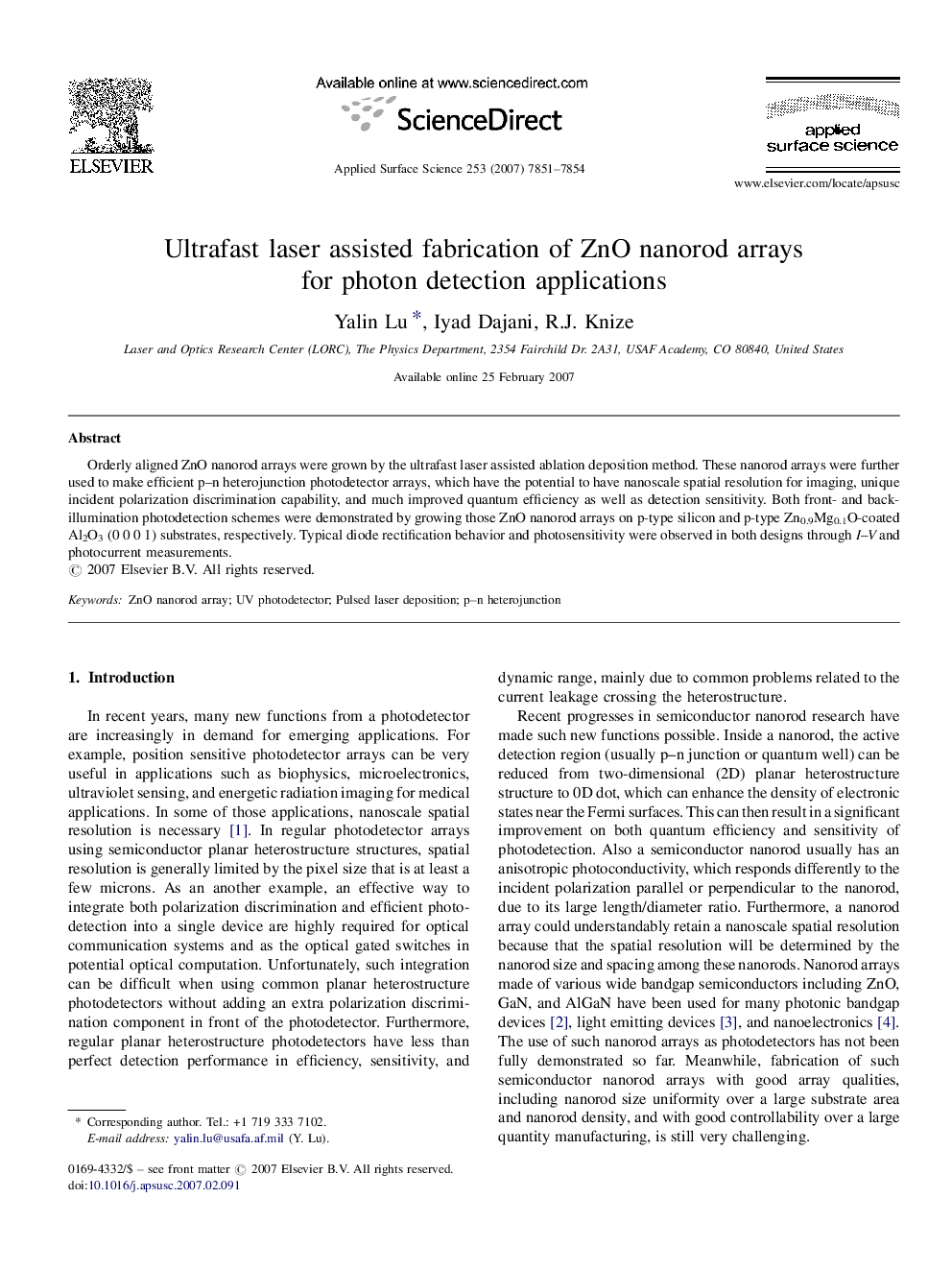| Article ID | Journal | Published Year | Pages | File Type |
|---|---|---|---|---|
| 5369581 | Applied Surface Science | 2007 | 4 Pages |
Abstract
Orderly aligned ZnO nanorod arrays were grown by the ultrafast laser assisted ablation deposition method. These nanorod arrays were further used to make efficient p-n heterojunction photodetector arrays, which have the potential to have nanoscale spatial resolution for imaging, unique incident polarization discrimination capability, and much improved quantum efficiency as well as detection sensitivity. Both front- and back-illumination photodetection schemes were demonstrated by growing those ZnO nanorod arrays on p-type silicon and p-type Zn0.9Mg0.1O-coated Al2O3 (0Â 0Â 0Â 1) substrates, respectively. Typical diode rectification behavior and photosensitivity were observed in both designs through I-V and photocurrent measurements.
Related Topics
Physical Sciences and Engineering
Chemistry
Physical and Theoretical Chemistry
Authors
Yalin Lu, Iyad Dajani, R.J. Knize,
